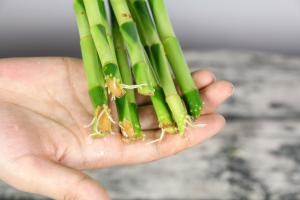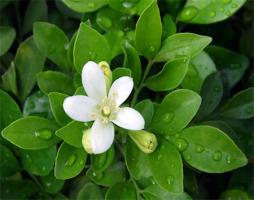How to Stabilize a Newly Planted Tree
Planting a tree is an exciting event, but it is just the beginning of a long-term investment in your landscape. In order for a tree to survive and thrive, it needs a solid foundation. Trees that are not properly staked, supported, and stabilized can shift or fall, potentially causing damage or injuries. This is why it is important to take the time to stabilize your newly planted tree. Here are some tips to help get you started.
Step 1: Choose the Right Materials
The first step in stabilizing a newly planted tree is to choose the right materials. This includes tree stakes, tree ties, and any other accessories you may need. You can purchase these items at your local nursery or garden center. Look for stakes that are at least two-thirds the height of the tree and made from durable materials such as wood, steel or fiberglass.
Step 2: Properly Plant the Tree
Before you can stabilize your tree, it is important to plant it correctly. Plant your tree at the right depth, making sure that the root flare is above ground. This will ensure that your tree has a strong and healthy root system. A tree that is planted too deep can be unstable and prone to tipping or leaning.
Step 3: Install the Stakes
Once your tree is planted, it is time to install the stakes. This involves sinking the stakes into the ground at a 45-degree angle, with the point facing away from the tree. Place the stakes on opposite sides of the tree, equidistant from the trunk. Make sure that the stakes are firmly anchored and won't pull out of the ground.
Step 4: Attach the Tree Ties
The next step is to attach the tree ties. These are bands or straps that are used to secure the tree to the stakes. Some common materials used for tree ties include soft, flexible rubber or nylon webbing. Tie the tree to the stakes using a figure-eight pattern, making sure that the tree isn't too tight or too loose. This will allow for some movement, which will help the tree develop a strong root system.
Step 5: Adjust the Ties
As your tree grows, it will need to be periodically re-tied and adjusted. This is to ensure that the ties aren't too tight and are not damaging the bark or constricting the tree's growth. Check your tree ties regularly and loosen them if necessary. You may also need to adjust the height of the ties as the tree grows. Remember to always use caution when working around your newly planted tree.
Conclusion
Stabilizing a newly planted tree may require some time and effort, but the rewards are well worth it. With the right materials and techniques, you can help your tree grow into a strong, healthy, and beautiful addition to your landscape. Remember to give your tree the support and care it needs, and it will reward you with years of enjoyment and beauty.

 how many times do yo...
how many times do yo... how many planted tre...
how many planted tre... how many pine trees ...
how many pine trees ... how many pecan trees...
how many pecan trees... how many plants comp...
how many plants comp... how many plants can ...
how many plants can ... how many plants and ...
how many plants and ... how many pepper plan...
how many pepper plan...































